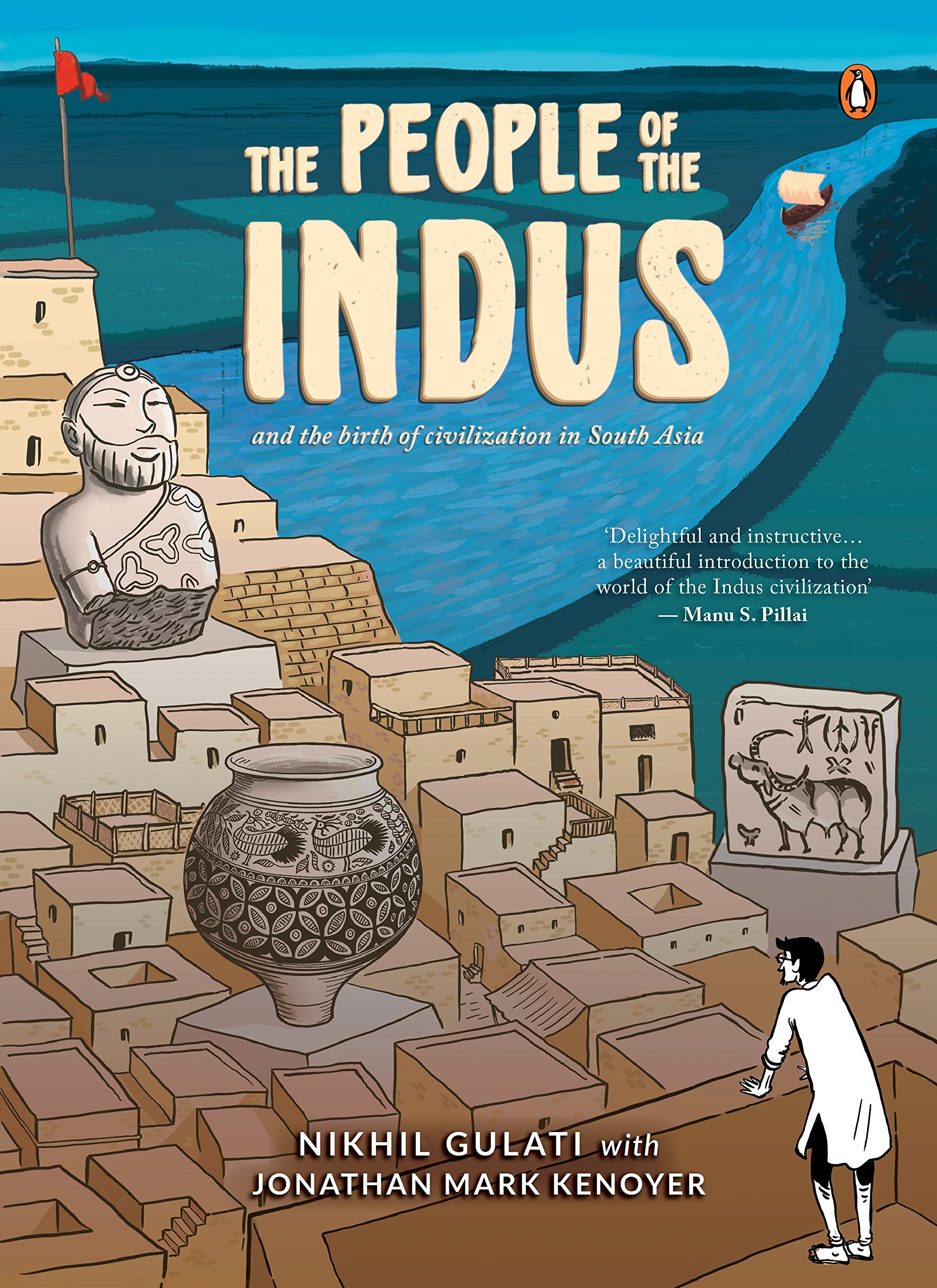


The People of the Indus: A Graphic Narrative on the Rise and Fall of the Harappan Civilization
S**K
Very good research-based book on Sindhu-Sabhyata (Indus Civilization)
I was always been curious about Indus civilization. While history text books and Discovery shows add knowledge, this book written by Nikhil Gulati visually represent it with well researched facts and hypothesis. Although this is a graphic non-fiction (instead of a graphic "novel"), I liked the author's logical storytelling approach for mass readers.This books finds some key answers that are globally pertinent of olden times as well as specific to Indus Civilization; these are:-1) What intreagued archaeologists to dig out places and discover few major cities and thousands of sites collectively known as Indus valley civilization?2) How Indus Civilization was different from contemporary Egyptian and Mesopotamian civilizations and why Indus people didn't build large structures like pyramids? How were the collective ideology and perceived social order for Indus people different from those in Egypt or Mesopotamia?3) What made logical transition for people to change from hunters gatherers to farmers to village and ultimately city dwellers?4) Development of beads, seals and writing system for Indus people and their significance?5) Global and local factors that cause the decline of Indus valley civilization?6) Aarya invasion vs migration vs indigenous conflict in light of Indus civilization?7) Significance of Saraswati river in the light of Indus Civilization - fact or fiction?Overall it is very good book.If the author plans a second edition, I would suggest author considers a summary after each chapter that give key takeaways based on arguments and hypothesis and facts discussed in the chapter and in the end of the book and infographic based on key takeaways.Only downside of this book is very uninteresting artwork. Although whatever drawn serves the purpose, the Author agreed that history is best served visually. Hence a better artwork would complement this book even better.
T**R
Awesome
The book was received in very good condition. Also the content of the book is top notch. This book should be taught in schools everywhere.
S**.
Easily understandable
Very delite book in terms our history
E**R
Best option to learn Indus Valley history
As an immigrant to India from the states, I’ve tried several books already to learn more about this counties history but they’ve all been super dry and unpalatable. But not this one!! Easy to read, interesting and masterfully illustrated. Would recommend to nationals and immigrants alike.
K**P
a must read for all school going kids
this is a awesome book and needes to reach out to school going students
N**R
Great book
If you want to find out about the Indus Valley (as I did) and were always curious about the people, their undeciphered language, what their cities looked like, what it would have been like to be present in those times, this book is for you. It’s great for all ages (I’m 40). Quite detailed and interesting. Loved it.
A**K
A walk through Indus valley civilization
Reading this book is like a walk through Indus Valley civilization.What a developed civilization, we as Indians must be proud of our rich heritage we have , which many countries of western world lack at all. To understand those times , people and their lifestyle, This book is must read.
P**R
MY EXPERIENCE
The foremost thing about this book, is that ki You just don't read but also at same time you tend to travel with the author the places he is actually referring to. So every one who are willing to buy this book go for it.You will not regret at all.This book shared a wide range of topics starting from the birth of IVC, then how trade , how agriculture , concept of religion, how was the infrastructure model at that time, language, furthermore it's comparison with Vedic , and many more you can come to know once you go for it.
T**Y
Excellent copy- as new
Well preserved 'used'.Very quick delivery.Can't be faulted.Recommend the seller.
M**R
This book is the harbinger of a new genre that will come to be called "Pop History"
Read the book on Kindle since it is not yet available outside India. It brings together so many dimensions of a civilization, and a side glance at contemporary civilizations, that history comes alive through the lives of people as opposed to the lives of kings, priests, conquests, monuments. It is an immersive experience. A tour guide makes the reader build her own narrative through innocent but searching questions, and triggers more questions. At the end, the reader is left hungry for more questions: what happened to that civilization, did it vanish or morph, where is it today, what are the signs that point to its continuity. Will this become a new way of teaching history, and even STEM topics on which author has written a few short pieces? Will it become a part of pedagogical tools and a way to enjoy history for those curious about? I hope this "Pop History" becomes the future of the past!
A**H
A great gift for a young friend
I asked a friend what to gift a young man who likes to read comics and this was a great suggestion. It explains history of people of the Indus in a great way.
Trustpilot
1 week ago
2 months ago